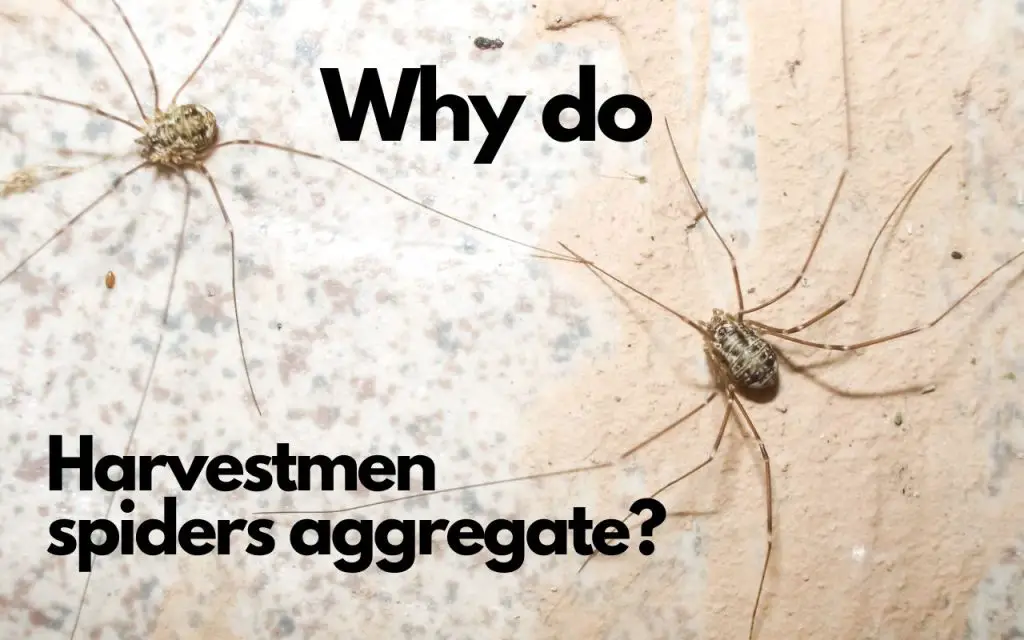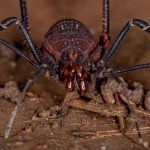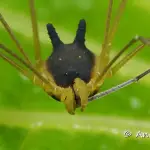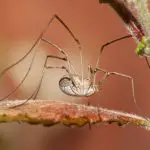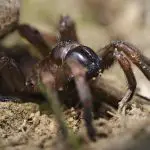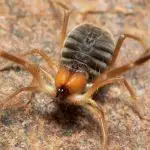In case you aren’t familiar with the humble harvestman, known to many as the “daddy longlegs”, it is one of the gentlest arachnids, and exhibits several behaviors that are generally absent in spiders and scorpions. Just for starters, they have a tendency to be social, sometimes even sharing food with each other.
Among the other intriguing behaviors these arachnids exhibit, one stands out even more: their propensity to clump together in large groups. Why do they do this? Let’s delve into this captivating spectacle.
The Harvestmen Huddle: An Introduction
Before we explore this intriguing behavior, let’s set the stage by getting to know the actors a bit better. Harvestmen, or Opiliones, belong to a diverse group of arachnids distinct from spiders, although they are often mistaken for them due to their similar appearance. They are easily identifiable by their characteristic long, thin legs and a compact body, where the cephalothorax (head) and abdomen appear fused together.
Now, let’s turn our attention to their intriguing collective behavior: the harvestmen huddle. Many species of harvestmen have been observed to gather together in large numbers, forming a seemingly chaotic ball of writhing legs and bodies.
This behavior, technically known as “aggregation,” might appear strange or even unsettling to some, but it offers fascinating insights into their survival strategies.
We’ll go through the three main hypotheses that explained this behavior in a moment. First, let me just say that every time I’ve seen it, it’s been during dry weather. Unsurprisingly, my preferred theory is that Harvestman primarily aggregate to conserve moisture.
I shot this video whilst on vacation in Portugal. The Harvestmen appeared almost out of nowhere, and all seemed to be aggregating around holes in the wall. The temperature was around 70F (21C), but the weather had been progressively getting dryer over the preceding week.
Why Do Harvestmen Aggregate?
There are several hypotheses that scientists propose to explain why harvestmen aggregate. Whatever I think, I have to admit that it’s entirely possible it’s a combination of these factors that drive this behavior. Let’s look at the main theories:
- Thermoregulation: By gathering in large numbers, harvestmen can maintain their body temperature more effectively, as the collective body heat of the group benefits all the members. This is particularly crucial in cooler climates or during colder periods.
- Moisture Conservation: Harvestmen are known for their susceptibility to desiccation, or drying out. By aggregating, they can create a microclimate that helps conserve moisture, vital to their survival, especially in arid environments.
- Predator Protection: Safety in numbers is a well-known survival strategy in the animal kingdom, and harvestmen are no exception. They are pretty weak on their own, even though some are slightly poisonous. Some scientists believe aggregation can confuse or deter predators, increasing each individual’s chance of survival. Full disclosure: some scientists say the opposite, citing studies that found no evidence of predator protection.
Table: Factors Driving Harvestmen Aggregation
| Hypotheses | Description |
|---|---|
| Thermoregulation | Collective body heat helps maintain temperature. |
| Moisture Conservation | Clumping together helps conserve moisture. |
| Predator Protection | Aggregation confuses or deters predators. |
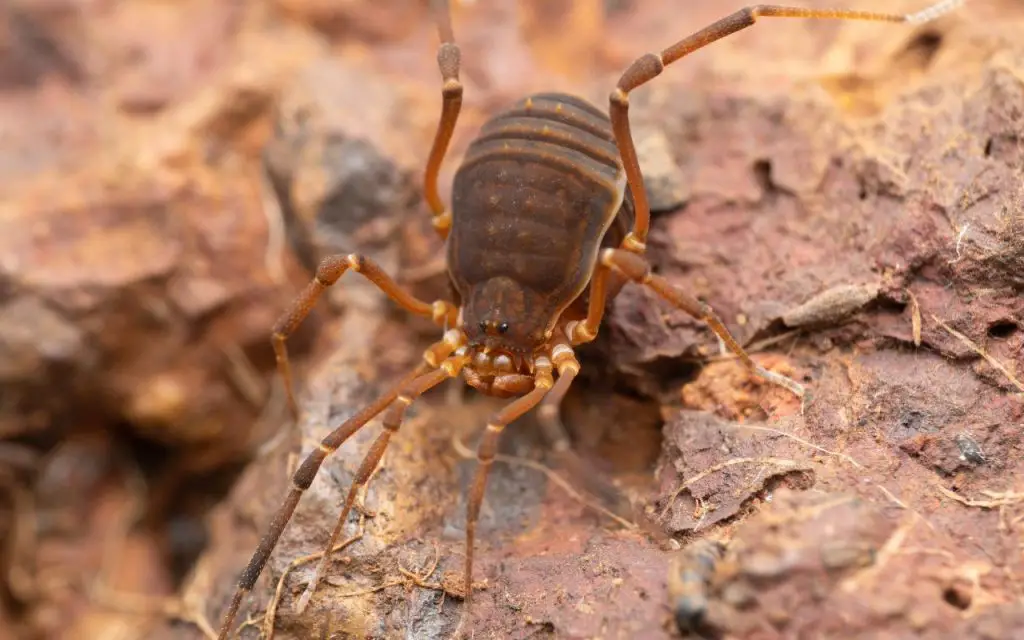
Observing Harvestmen Aggregation in a Controlled Environment
As an arachnid hobbyist, I’ve had the privilege of observing harvestmen behavior firsthand in a controlled environment. My harvestmen enclosure is a simple setup that includes a suitable substrate, hiding spots, and a regulated temperature and humidity system. In this setup, I’ve noticed that my harvestmen do indeed seem to exhibit a preference for clumping together, particularly during their inactive periods.
Here are some of the things I’ve observed:
- Harvestmen often aggregate in areas with higher humidity.
- When disturbed, the harvestmen disperse rapidly but regroup once the threat has passed.
- During feeding times, the clump temporarily disbands but quickly reforms afterwards.
It’s important to note that these are just my observations, and the behavior of harvestmen can vary depending on their species and individual personalities. Also, the species I keep are omnivorous, eating both plant and vegetable matter. This may make them even more social than strictly carnivorous species (just a theory!).
Delving Deeper: The Study of Harvestmen Aggregation
While my firsthand observations offer valuable insights, understanding why harvestmen clump together involves delving into the wider world of scientific research. Many researchers have dedicated themselves to understanding the drivers of this behavior, exploring the ecological and evolutionary factors that influence this fascinating aspect of harvestmen biology.
Here’s a couple of studies that would make interesting reading on the subject:
- Benefits and Costs of Mixed-Species Aggregations in Harvestmen (Arachnida: Opiliones)
- Multi-Species Aggregations in Neotropical Harvestmen (Opiliones, Gonyleptidae)
Why do Harvestmen clump together? Conclusion…
The social behavior of harvestmen, particularly their tendency to aggregate, reveals the complex and dynamic nature of these creatures. From thermoregulation and moisture conservation to predator protection, the ‘why’ behind the harvestmen huddle is a fascinating topic of study.
As I continue to observe and study my own group of harvestmen, I look forward to unraveling more about the intriguing world of these arachnids. And I hope that this insight into why harvestmen clump together has increased your fascination for these often-overlooked but truly incredible creatures.
Arachnids are a window into a world much different than our own, but through careful observation and study, we can glean insights that help us understand and appreciate their complexities.
If you enjoy keeping arachnids like tarantulas, I would encourage you to also get some Harvestmen if you can, given that their social side is incredibly unique amongst this group of arthropods.
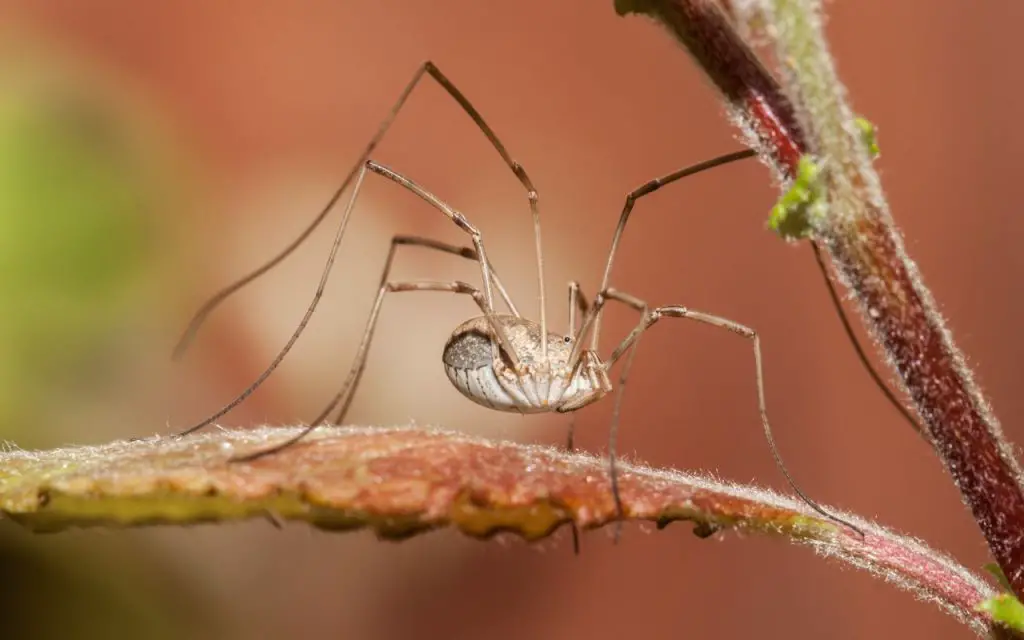
How do harvestmen mate?
Though some species are parthenogenic (meaning the females produce offspring without males), most harvestmen mate to reproduce. The male must approach the female with some food on his chelicerae (jaws), which scientists call a nuptial gift. After mating, the female lays eggs in leaf litter or soil, days or weeks later. Unlike some spiders, the female does not eat the male, and he may even protect her until she lays the eggs.
Do harvestmen live in groups?
Some species of harvestmen do live groups, a good example being Metagyndes innata. This is a gentle, slow-moving species from Chile. It’s hard to find for sale, but those who keep it have noticed that it is social and does best in small groups.
What is the ball of harvestmen spider?
If you see a ball of harvestmen spiders, what you’re seeing is a phenomenon called aggregation. This is just a slightly more scientific way of saying “grouping together”. Many species aggregate, and it is a behavior that is known to increase their chances of survival. In harvestmen, it likely protects them from the cold, drying out, and predators.

